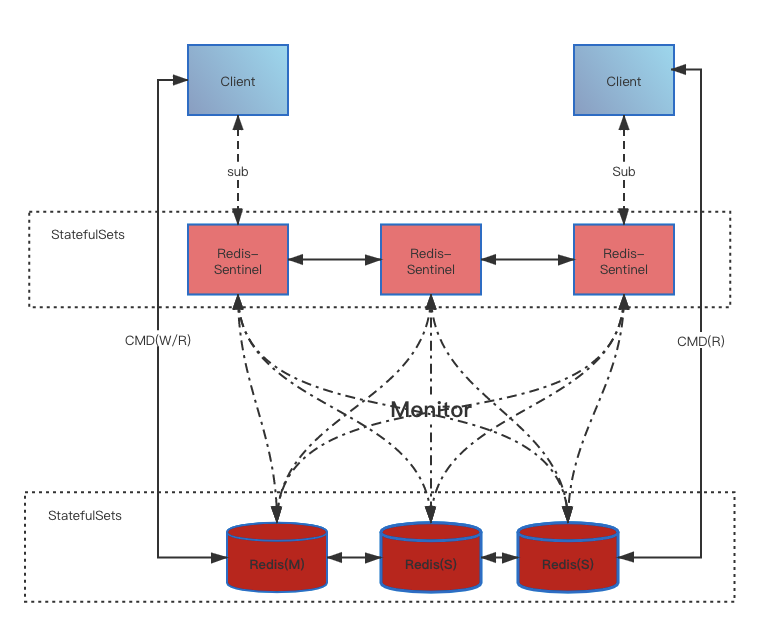Architecture
Alauda Cache Service for Redis OSS offers two distinct deployment architectures, each designed to address specific performance, scalability, and high-availability requirements.
-
Sentinel Mode: A high-availability configuration consisting of a primary Redis instance and configurable replica nodes. The replicas provide read scalability and maintain synchronization with the primary node to ensure data consistency. Redis Sentinel monitors instance health and orchestrates automatic failover when necessary.
-
Cluster Mode: A distributed architecture that implements horizontal scaling through data sharding across multiple Redis nodes. This configuration provides enhanced read/write throughput, automatic failover capabilities, and intelligent data partitioning for optimal performance and availability in high-scale environments.
TOC
Sentinel Mode
Sentinel Mode implements a high-availability solution based on Redis's native master-replica replication. The Redis Sentinel subsystem continuously monitors the health of all Redis instances and automatically promotes a replica to primary status during failure scenarios, maintaining service continuity. Key characteristics include:
- Operational Simplicity: The architecture offers straightforward implementation and management compared to distributed clustering solutions.
- Automated Failover: Sentinel provides robust health monitoring and automatic failure detection with configurable thresholds for primary-to-replica promotion.
- Vertical Scaling: While supporting vertical resource scaling, this architecture has limited horizontal scalability as all write operations must be directed to the primary node.
- Sentinel Resilience: For complete high availability, multiple Sentinel instances must be deployed to avoid introducing the Sentinel itself as a single point of failure.

Cluster Mode
Cluster Mode represents Redis's comprehensive distributed solution. Through Redis Cluster protocol, the system achieves horizontal scalability by distributing data across multiple nodes using hash slot allocation and consistent hashing algorithms for automatic data partitioning and rebalancing. Key characteristics include:
- High Availability: The architecture implements automatic node failure detection and recovery mechanisms, ensuring continuous data service accessibility.
- Dynamic Scaling: Supports runtime addition or removal of nodes with automatic data rebalancing to accommodate changing workload requirements.
- Workload Distribution: Implements intelligent load balancing across the cluster to prevent hotspots and ensure optimal resource utilization.
- Data Distribution: Partitions datasets across multiple nodes, preventing single-node memory constraints and enabling support for substantially larger total datasets.
- Operational Complexity: Requires understanding of sharding mechanisms, consistent hashing principles, data migration strategies, and cluster topology management.

Architecture Selection Guide
| Requirement | Sentinel Mode | Cluster Mode |
|---|---|---|
| Horizontal scalability beyond single-node memory limits | ❌ | ✅ |
| Simplified deployment and management | ✅ | ❌ |
| Support for large datasets (>8GB) | ❌ | ✅ |
| High availability with automatic failover | ✅ | ✅ |
| Optimized for read-heavy workloads with read replicas | ✅ | ✅ |
| Support for transaction operations across multiple keys | ✅ | ❌* |
* Redis Cluster has limitations on multi-key operations when keys belong to different hash slots